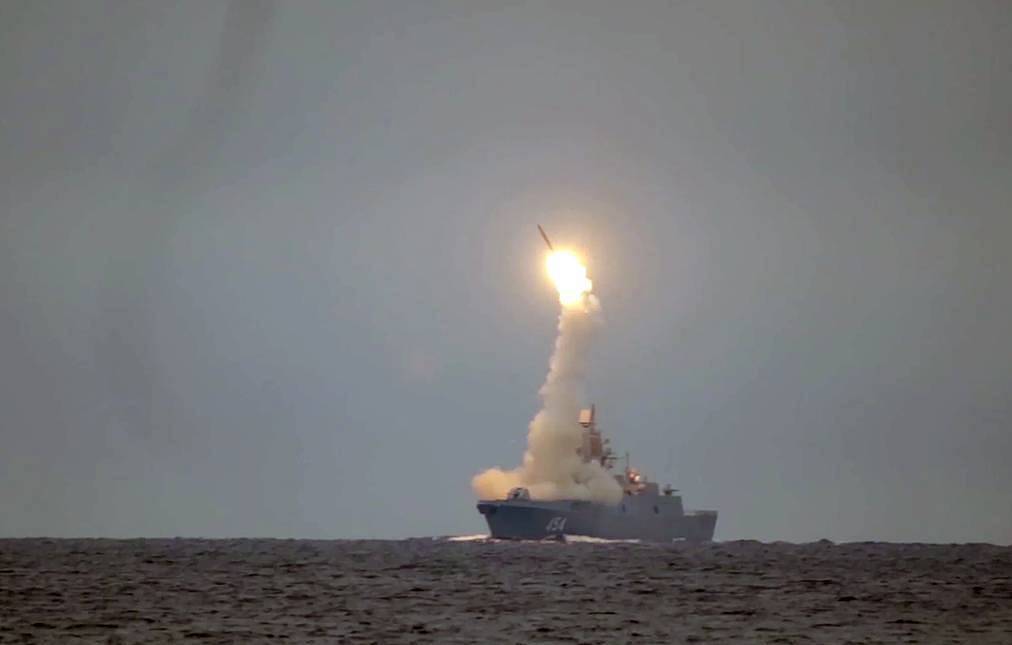Russia’s Defense Ministry ordered an additional batch of cutting-edge Tsirkon hypersonic missiles. The first contract to produce a batch of Tsirkons was signed in the summer of 2021. Russian state media agency TASS reported that the additional contract involves several dozen missiles and should be completed in 2023. The 3M22 Tsirkon also spelled as 3M22 Zircon (NATO reporting name: SS-N-33) is a scramjet powered maneuvering anti-ship hypersonic cruise missile produced by Russia. The missile represents a further development of the Hypersonic Experimental Flying Vehicle (HELA) developed by NPO Mashinostroyeniya.
Tsirkon is believed to be a maneuvering, winged hypersonic cruise missile with a lift-generating center body. A booster stage with solid-fuel engines accelerates it to supersonic speeds, after which a scramjet motor with liquid-fuel (JP-10 jet fuel) in the second stage accelerates it to hypersonic speeds.The missile’s range is estimated to be 135 to 270 nautical miles (155 to 311 mi; 250 to 500 km) at low level, and up to 400 nmi (460 mi; 740 km) in a semi-ballistic trajectory; average range is around 400–450 km (250–280 mi; 220–240 nmi). The longest possible range is 540 nmi (620 mi; 1,000 km) and for this purpose a new fuel was created. Some internet sources even claim the range of missile can reach 1,000 – 2,000 km, depending on the type of target.

The high speed of the Tsirkon likely gives it better target-penetration characteristics than lighter subsonic cruise-missiles, such as Tomahawk. Being twice as heavy and almost eleven times as fast as Tomahawk, the Tsirkon has more than 242 times the on-cruise kinetic energy of a Tomahawk missile (?9 gigajoules, or equal to 2,150 kg TNT explosive energy). Its Mach 9 speed means that it cannot be intercepted by existing missile defence systems and its precision makes it lethal to large targets such as aircraft carriers. Tsirkon can travel at a speed of Mach 9 (6,900 mph; 11,000 km/h; 3.1 km/s). This has led to concerns that it could penetrate existing naval defense systems.
Because it flies at hypersonic speeds within the atmosphere, the air pressure in front of it forms a plasma cloud as it moves, absorbing radio waves and making it practically invisible to active radar systems (plasma stealth). However, this also blinds any radar or IR seeker on the missile. With plasma stealth, hypersonic-speed and sea skimming technique, intercepting a flying Tsirkon is extremely difficult, if at all feasible at the current level of technology. The final section of the trajectory will be overcome in a minimum time (under 10 seconds), the enemy will not have time to carry out all the necessary procedures. Tsirkon exchanges information in flight and can be controlled by commands if necessary.















